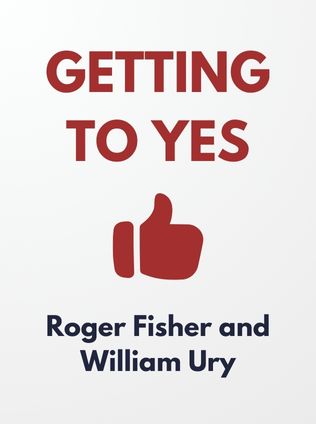
Getting to Yes
Negotiating Agreement Without Giving In
By Roger Fisher and William Ury
Published 01/1981
About the Author
Roger Fisher and William Ury, the masterminds behind Getting to Yes, are not just scholars; they are pioneers in the field of negotiation. Fisher, a professor at Harvard Law School, spent decades studying and teaching negotiation, not just in theory but in real-world applications. His work had a significant impact on both international diplomacy and business practices. William Ury, equally influential, co-founded the Harvard Program on Negotiation, a global center for teaching and research on negotiation and conflict resolution. Ury's experiences in mediating conflicts at the highest levels have provided him with a deep understanding of human behavior and negotiation tactics. Together, they combined their expertise to craft a guide that is both practical and transformative, helping individuals and organizations achieve success in negotiations.
Main Idea
The central thesis of Getting to Yes is that negotiation should be a collaborative process, where parties work together to find a solution that benefits all involved. This contrasts with traditional adversarial negotiation methods, where each party takes a position and defends it fiercely, often at the expense of the relationship and the outcome. The authors introduce the concept of "principled negotiation," which focuses on interests rather than positions, and promotes the idea of creating options for mutual gain. The goal is to reach agreements that are fair, durable, and based on objective standards rather than the will of one side over the other.
Table of Contents
- Introduction: The Problem with Traditional Negotiation
- Separate the People from the Problem
- Focus on Interests, Not Positions
- Invent Options for Mutual Gain
- Insist on Using Objective Criteria
- What If They Are More Powerful?
- What If They Won't Play?
- What If They Use Dirty Tricks?
- Conclusion: Achieving Success in Negotiation
Introduction: The Problem with Traditional Negotiation
Traditional negotiation often falls into a pattern known as positional bargaining. In this method, each party starts with a position, argues for it, and makes concessions to reach a compromise. However, this approach is fraught with problems. It can lead to unwise agreements, damage relationships, and be inefficient. As Fisher and Ury put it, "Positional bargaining is inefficient and results in unwise agreements."
The authors argue that this adversarial approach, where each side sees the other as an opponent, fails to consider the underlying interests that drive people's positions. For instance, in a negotiation over salary, one party's position might be a specific figure, while the underlying interest could be financial security or recognition of value. By focusing solely on positions, negotiators often miss opportunities for solutions that satisfy both parties' interests.
the pitfalls of positional bargaining include:
- High Costs: The process can be time-consuming and costly, especially when both sides dig in their heels.
- Strained Relationships: Adversarial tactics can create resentment and lead to damaged relationships that affect future interactions.
- Suboptimal Outcomes: Compromises often leave both parties dissatisfied, as the solution may not fully address their underlying needs.
Separate the People from the Problem
One of the foundational principles of principled negotiation is to "separate the people from the problem." This means recognizing that the people you are negotiating with are human beings with emotions, values, and different perspectives. It is crucial to treat them with respect and empathy, even if you strongly disagree with their position.
Fisher and Ury emphasize that people tend to entangle their identities with their positions. When this happens, any criticism of the position is taken personally, leading to defensiveness and conflict. To avoid this, the authors suggest focusing on the issue at hand and not on the personalities involved.
Sign up for FREE and get access to 1,400+ books summaries.
You May Also Like
The Subtle Art of Not Giving a F*ck
A Counterintuitive Approach to Living a Good Life
By Mark MansonRich Dad Poor Dad
What the Rich Teach Their Kids About Money - That the Poor and Middle Class Do Not!
By Robert T. KiyosakiHow To Win Friends and Influence People
The All-Time Classic Manual Of People Skills
By Dale CarnegieQuiet: The Power of Introverts
The Power of Introverts in a World That Can't Stop Talking
By Susan Cain



















